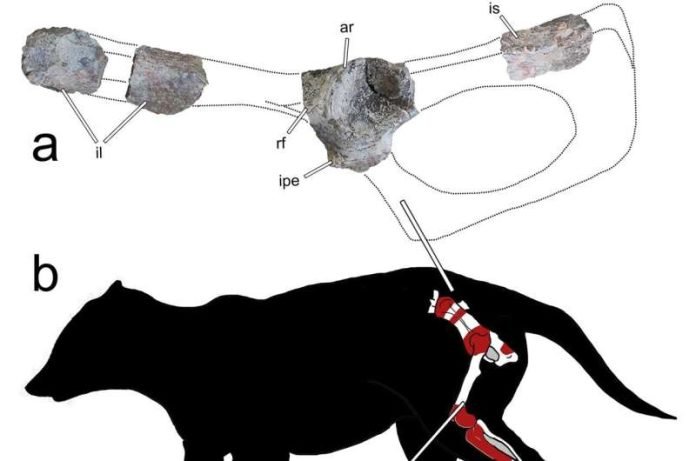
In a new study, archaeologists and paleontologists have discovered a new species of mammal from the Maastrichtian age, significantly larger than its contemporaries.
Published in Scientific Reports, this discovery comes from a multi-institutional team that unearthed a fossil in southern Patagonia, consisting of critical skeletal components like a femur, tibia, and parts of the hip.
These remains have identified the mammal as a member of Theria, a group of mammals known for not laying eggs, marking it as a giant among its Mesozoic era peers.
Named Patagomaia chainko, this mammal stood out for its size, dwarfing other mammals of its time. Described as medium-sized by today’s standards, akin to an Andean fox, Patagomaia chainko weighed between 2 to 25 kilograms and measured about a meter in length.
This size estimate places it among the largest mammals known from the Mesozoic Era, living approximately 70 million years ago.
The revelation is particularly significant given the context of the era. Most mammals of the Mesozoic were tiny, often compared to the size of modern mice or shrews, with a body mass usually below 100 grams.
Only a rare few reached or exceeded the weight of 1 kilogram. The discovery of P. chainko, therefore, challenges previous conceptions about the size range of mammals coexisting with dinosaurs.
The researchers suggest that P. chainko’s physique might have resembled that of modern animals such as the platypus, porcupine, or badger, offering fascinating insights into its lifestyle and habitat.
This find also highlights a notable trend observed in Mesozoic mammals: those living in the southern hemisphere tended to be larger than their northern counterparts, a pattern that persisted until the catastrophic asteroid impact that led to the dinosaurs’ extinction.
The significance of P. chainko extends beyond its size. This discovery sheds light on the evolutionary trajectory of mammals in the southern hemisphere during the Mesozoic, providing valuable clues about the ecological niches they occupied and how they might have adapted to their environments.
It also underscores the rich biodiversity of prehistoric Patagonia, a region that continues to yield critical paleontological discoveries.
As researchers continue to analyze and interpret the data from P. chainko, the scientific community eagerly anticipates further revelations about this remarkable species.
Its discovery not only enriches our understanding of mammalian life millions of years ago but also opens new avenues for exploring the evolutionary history of mammals in a world dominated by dinosaurs.
The research findings can be found in Scientific Reports.
Copyright © 2024 Knowridge Science Report. All rights reserved.



